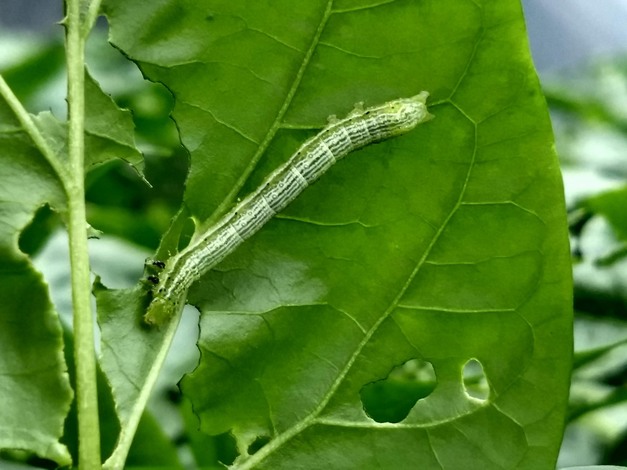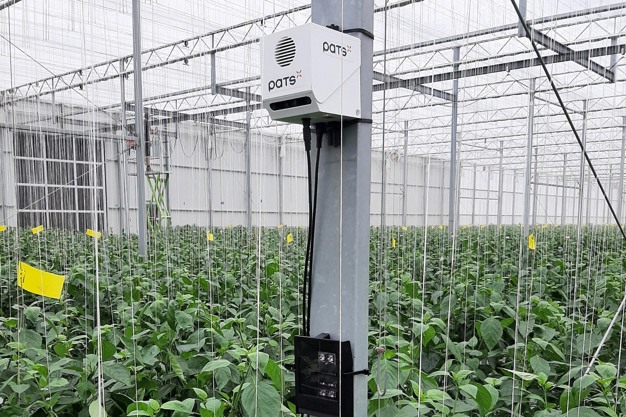Marvin Koot, a technical crop protection specialist at Biobest Netherlands, has been consulting Jansen Paprika for years. Located in Andijk in The Netherlands, Jansen Paprika cultivates an impressive 25 hectares of red and yellow bell peppers. The company is a member of Growers United and is Planet Proof certified. Together with Ron Jansen, co-owner of Jansen Paprika, Marvin has taken on the challenge of using as little chemical crop protection as possible in the 2023 season. And successfully so. This achievement was partly thanks to the use of the PATS-C solution. The system was deployed in the fight against the Tomato looper (Chrysodeixis chalcites), a well-known pest in bell peppers. The caterpillars of this moth can quickly and extensively damage the crop. PATS-C recognizes and counts different moth species, keeping a precise track of activity and pest development. This allows for immediate response to impending infestations.
 Biobest is a supplier of Kwekerij Jansen Paprika (photo by Biobest Netherlands)
Biobest is a supplier of Kwekerij Jansen Paprika (photo by Biobest Netherlands)
PATS-C is a product of the company PATS. A developer based in Delft that specializes in creating monitoring systems for the automatic detection of pest insects in greenhouse horticulture, among other solutions in the field of IPM. For several years, Biobest and PATS have been collaborating in this domain. From this partnership, the Trap-Eye™ system was also developed. This system recognizes and automatically counts insects such as whiteflies, thrips, and leaf miners on sticky traps.

At the beginning of 2023, Ron was very interested in the solutions offered by PATS, especially PATS-C. In the years before, the company frequently faced issues due to the Tomato looper, sometimes resulting in significant damage caused by the caterpillars. At the start of the previous season, he installed this system in a 6-hectare section. Ron Jansen's experiences have been very positive: "At this location, we were able to combat the caterpillars entirely with biological control. So, with less use of substances compared to previous years and without notable crop damage." Thanks to the monitoring system, Ron was able to choose the right moments throughout the season to use Bt (Bacillus thuringiensis), a biological agent against caterpillars. The PATS-C dashboard showed three moments in the season when adult moth activity increased: mid-June, mid-July, and mid-August. At these times, adult moths flew into the greenhouse from outside. After these increases in pest population were detected, a Bt product was applied shortly thereafter. This precise timing meant that the caterpillars came into contact with the agent right after the egg phase, preventing them from developing into moths. As a result, the damage to the crops was minimal, and new generations were stopped in their tracks.
 The PATS-C dashboard displays the flight activity of the Tomato looper (picture by PATS).
The PATS-C dashboard displays the flight activity of the Tomato looper (picture by PATS).
For the 2024 season, Ron and Marvin have set their sights again on caterpillar control without the use of chemical pesticides. With the help of the PATS-C system, this should be a piece of cake. And it is not just the Tomato looper that is under surveillance; other moth species do not escape the 'eyes' of PATS-C either. For instance, the Duponchelia fovealis, which can also become problematic in pepper cultivation when present in high numbers.


